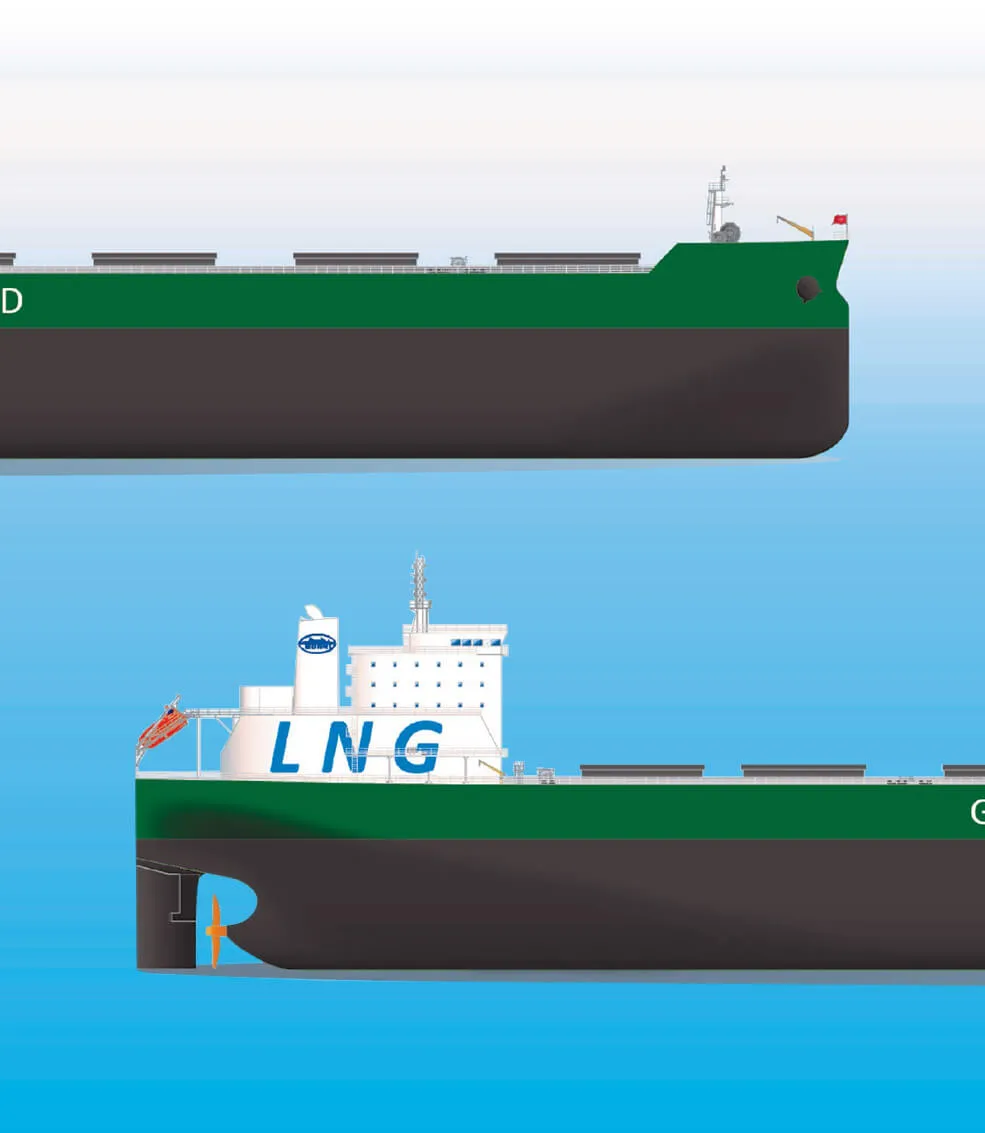Green Corridor JIP takes LNG propulsion to the next level
Now heading into Phase 2, the Green Corridor joint industry project (JIP) is looking to build on the success of their Newcastlemax design and bump it up to the VLOC level.
In search of the most cost-efficient and environmentally friendly solution for transporting iron ore and coal on the “Green Corridor” between Australia and China, the JIP that was established to develop an LNG-fuelled Newcastlemax design for the route is now at work on a 260,000 dwt dedicated ore carrier based on the same design principles.
In 2016, when the IMO confirmed the 2020 deadline for the 0.5% sulphur cap, major stakeholders serving the Australia-China iron ore and coal trade route, together with LNG supplier Woodside, ship designer SDARI, and class society DNV GL, decided to come together to develop a suitable LNG-fuelled bulk carrier solution for the route.

Paving the way for LNG fuel
The result was a robust, commercially viable and safe LNG-fuelled bulk carrier design, developed using leading-edge but proven technology. The Newcastlemax design was well received, and orders for this vessel type are expected to be placed during 2018. After two more partners joined the project, shipowner China Merchants and LNG supplier Shell, the partners agreed to apply the same economical and technical principles to a larger vessel dedicated to only iron ore and still running on dual fuels.
Now in Phase 1b, the Green Corridor JIP has performed a feasibility study on LNG as fuel for a VLOC (260,000 dwt) operating between Australia and China. The concept design is currently undergoing confirmation, awaiting approval in principle from DNV GL.
Phase 2 of the JIP is focused on implementation of the findings from Phases 1a (Newcastlemax) and 1b (VLOC). Bunkering issues are being addressed, such as compatibility and safety studies for ship-to-ship bunkering, shore-based bunkering vs shipbased bunkering, and the economics calculation is being updated accordingly to demonstrate the business case for LNG as fuel. The objective is to enable the development of optimized LNG bunkering supply chains to support efficient bunkering of bulkers trading from Western Australia, and give the industry the confidence to invest in LNG-fuelled bulk carriers.
The partners are also seeking to obtain more accurate market estimates of the cost of LNG-fuelled bulk carriers and the differential to conventionally fuelled bulk carriers in order to support the definition of realistic and economically viable rates for long-term charter parties.
For the new VLOC design, a fuel tank size analysis sought to strike the balance between minimizing LNG bunkering time per round trip and maximizing LNG fuel storage capacity in order to meet requirements for longer trade routes in the future. Tank size was ultimately set at 8,000 m3, based on two round trips from Western Australia to China using two LNG Type C tanks.
The tank layout is similar to that of the Newcastlemax, with two LNG tanks placed above the engine room but submerged from the main deck, giving the optimal balance between cost, operational flexibility, and safety. As with the Newcastlemax design, Type C tanks have been chosen for maturity of technology, ease of installation and operation, general economic advantages, and minimal cargo capacity loss.

Building the business case
Economic feasibility studies were performed in Phases 1a and 1b to investigate dual-fuel CAPEX and OPEX, based on a wide range of possible capital cost, operational cost, and sensitivities to LNG and low-sulphur marine fuel oil prices.
Due to the rapid rise in crude oil prices over the past year, the price of low-sulphur marine fuel is now almost 50 per cent higher than when economics were analysed for Phase 1a in early 2017. With a slower growth in the price of Asian LNG, the gap between low-sulphur marine fuel and LNG is increasing, thus reinforcing the robustness of the business case from 2017. Hence, the latest study shows an even more encouraging payback time, less than eight years in the most realistic scenarios, compared to ten in the previous study conducted in 2017.
